March 18, 1937
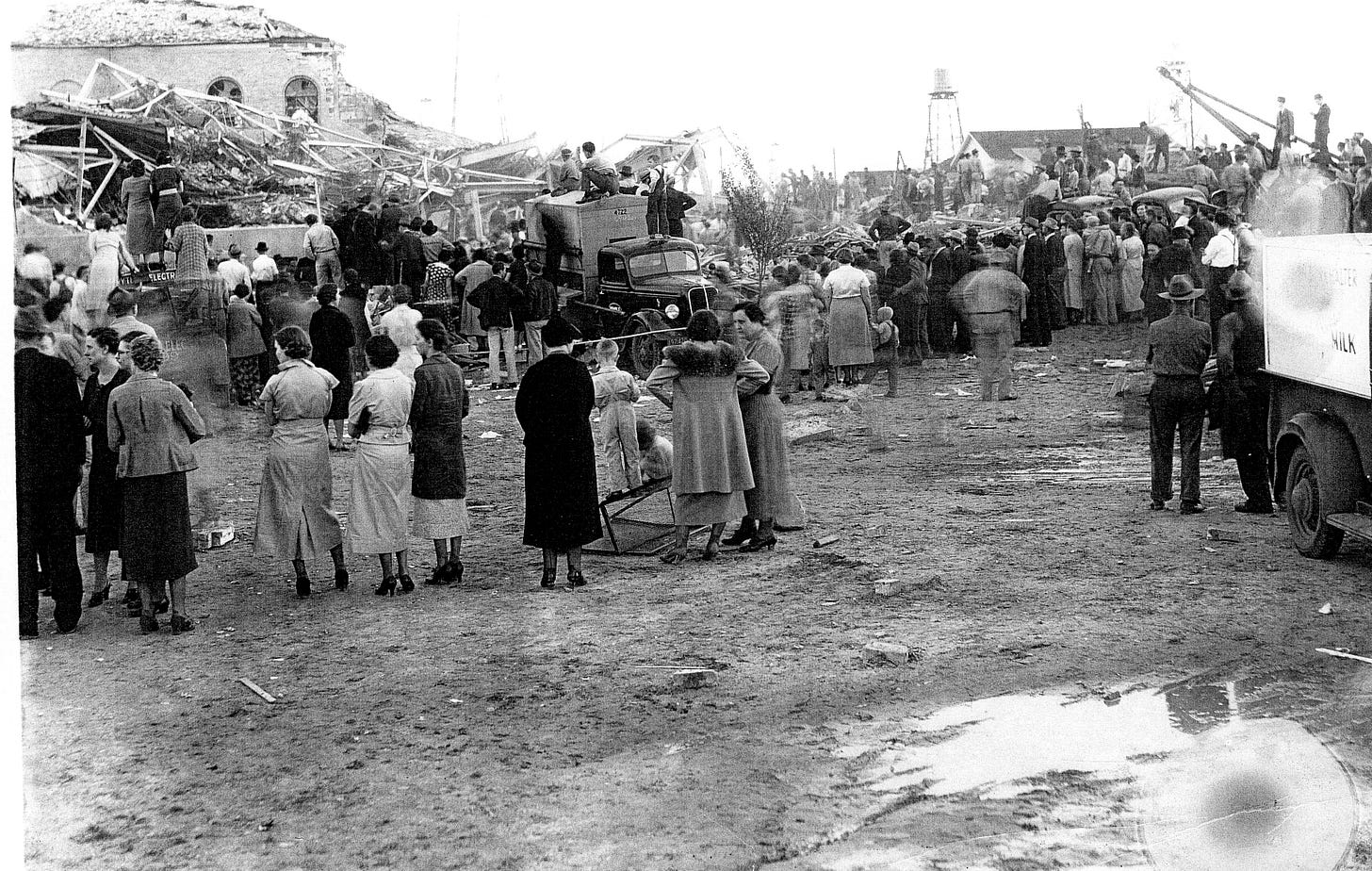
Release Date: March 18, 2025
People often ask why I have such a passion for telling lost and found stories. Sometimes I talk about the teaser file of stories I’ve been keeping since the mid-80s. Other times, I mention my natural curiosity and love of local and family history. And every so often, I tell them how it all started in New London.
Eighty-eight years ago today, March 18, 1937, the richest school in America exploded, killing 294 students, staff members and visitors. To this day, the New London TX School explosion remains the worst school disaster in American history.
And oddly, it remains part of my history, as well.
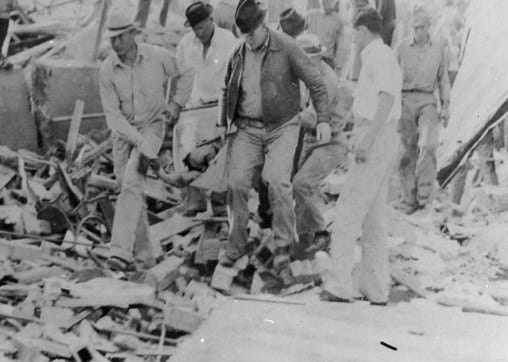
A chance encounter
It was May of 1999, and I was traveling east across Texas on I-20, headed toward Shreveport, LA in search of a story. Kilgore was just 10-minutes off the freeway, so I decided to stop at the East Texas Oil Museum there. I’d heard good things about it, and was curious about the history of the biggest and most prolific oilfield in America, of which I knew very little.
As it turned out, it was a Monday, and the museum was closed.
An older gentleman, a local, approached me, and we started talking. He told me there was another good museum just down the road 20 miles in a little town called New London. I should stop there. I’d find it interesting.
And so I did.
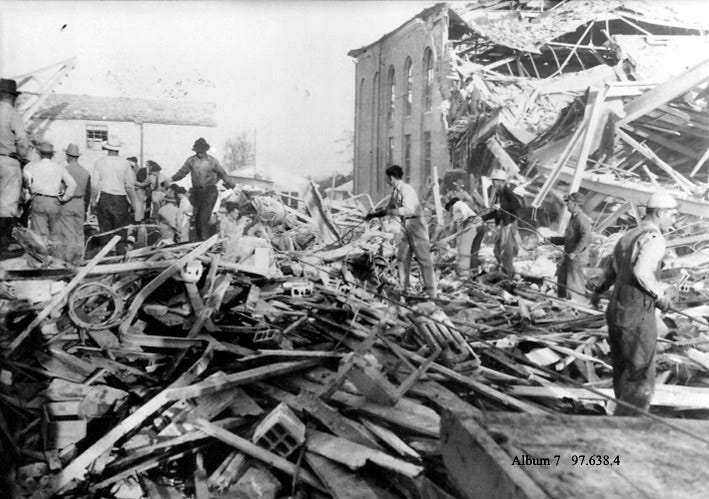
A lost story found
That museum was the London School Museum, and it was dedicated to telling the stories of the 1937 New London School Explosion. And, instead of spending a few minutes there as I’d planned, I spent two days.
When I finally made it to Shreveport, I sent out an email to a small Texas publishing house. Three days later, I got a response. A week after that the contract arrived.
Please hit the ❤️ button at the bottom of the page to help this story reach more readers. And if you’re not already a subscriber, I’d love to have you join me. Thanks!

The details by heart
I spent nearly 14 weeks researching the New London school explosion, casting a wide net and drawing ever closer to the story, if not physically, at least contextually. I started in Austin at the University of Texas library and the Texas State archives where I researched the official records and accounts by day and spent nights at the local youth hostel typing notes into the green-screened Macintosh laptop I’d bought second-hand for fifty bucks.
Then came more archives, special collections and newspaper morgues in Dallas, Houston and elsewhere as I pieced together the history of the oil field and roughnecks, the school, the explosion and the aftermath.
After seven weeks, I finally made my way to the small towns and byways of east Texas. I haunted county and local history centers, museums, libraries and newspaper offices, gathering names of possible sources, tying together events, places, people and moments. And each night, I sat at a campground picnic table and filled out and sorted index cards by the light of a propane lantern.
By the time I got to New London, I knew the facts by heart, and I was ready to hear the truth.

Stories in the silent places
The late Molly Ward was a spitfire of a woman, diminutive in size, but larger than life in every way that mattered. As a survivor and founder and director of the London Museum, Molly had given me a tour that first day, and quickly become my mentor and PR gal.
When I finally got back to New London, she set me up in an unused room next to the museum, gathered photos of students who’d been killed in the explosion to hang on the walls, and got the word out that I was in town.
That first seven-hour day, three people came in, and not one said a word about 1937.
Talking about the explosion and all that had happened didn’t come easy. Many young survivors had simply been told their siblings and classmates were gone and to move on. Some families never spoke of the tragedy once their dead had been buried –bedroom doors were literally nailed shut. Others just up and moved.
Oil fields, I was told, were dangerous places, and folks were used to death.
The past was six decades old, I was told. No one needs to talk about it anymore.
By the third day, I’d spoken to maybe a dozen survivors. Some talked for just a few minutes before getting overwhelmed and leaving, others stayed for hours, cautiously picking their way through memories like mine fields.
Some simply talked about the weather, but came in every afternoon nonetheless.
In the end, scores of survivors, family members, friends and others sat with me and shared their stories. They came from down the street and from states away. Some had never said the words out loud before. Some stories took days to tell, one long-ago memory at a time. Some rushed out like water from a fire hose.
However they arrived, each night, I’d lie awake in my motel room and relive the horror of them all, asking God to make me worthy of the task I’d been given.
Why I write
The book came out the first week of March 2000, and I returned to New London to participate in the memorial service and reunion a few weeks later. My publisher had forwarded copies, and after the more somber events of the day, I had a little book signing during the get-together that followed. One survivor had me sign a book for each of his children and grandchildren: he’d never been able to tell them his story, he said. Still couldn’t, but he wanted them to know.
I’d never felt so on purpose.

Remembering out loud
For the past 26 years, I’ve silently marked the passing of March 18th. Some years I’ve re-read parts of the book; other years I’ve spent time going through obituaries and saying goodbyes – so many goodbyes. A few years, I’ve found my way back in New London, but never to the memorial service – that’s not my place.
It’s their story, not mine.
However, every March 18th I stop to marvel at the incredible honor that was mine to sit with people who’d gone through the unimaginable, to be witness to their memories and trusted to tell their stories.
This year, is no exception. It’s just a little more public.
Copyright 2025 Lori Olson White
Next Tuesday, I’ll return with a brand new lost & found story, and this one is a lot lighter than some of the more recent ones I’ve shared. Spoiler alert, it has a little something to do with Samuel Clemens and the Mighty Mississippi.
Have you read the incredible true story of Aimee Henry and Mary Martha Parker? Call Me a Bastard is my longest serialized story to-date, and the one that introduced the Lost & Found Story Box to readers here at Substack. Check out the story from the beginning.
And in case you missed it, here’s a link to my most popular short series to-date, The Incorrigible John George. I hope you’ll agree that “incorrigible” is the best way to describe this old scoundrel!
The Lost & Found Story Box is reader-supported. When you buy through links on our site, we may earn an affiliate commission.





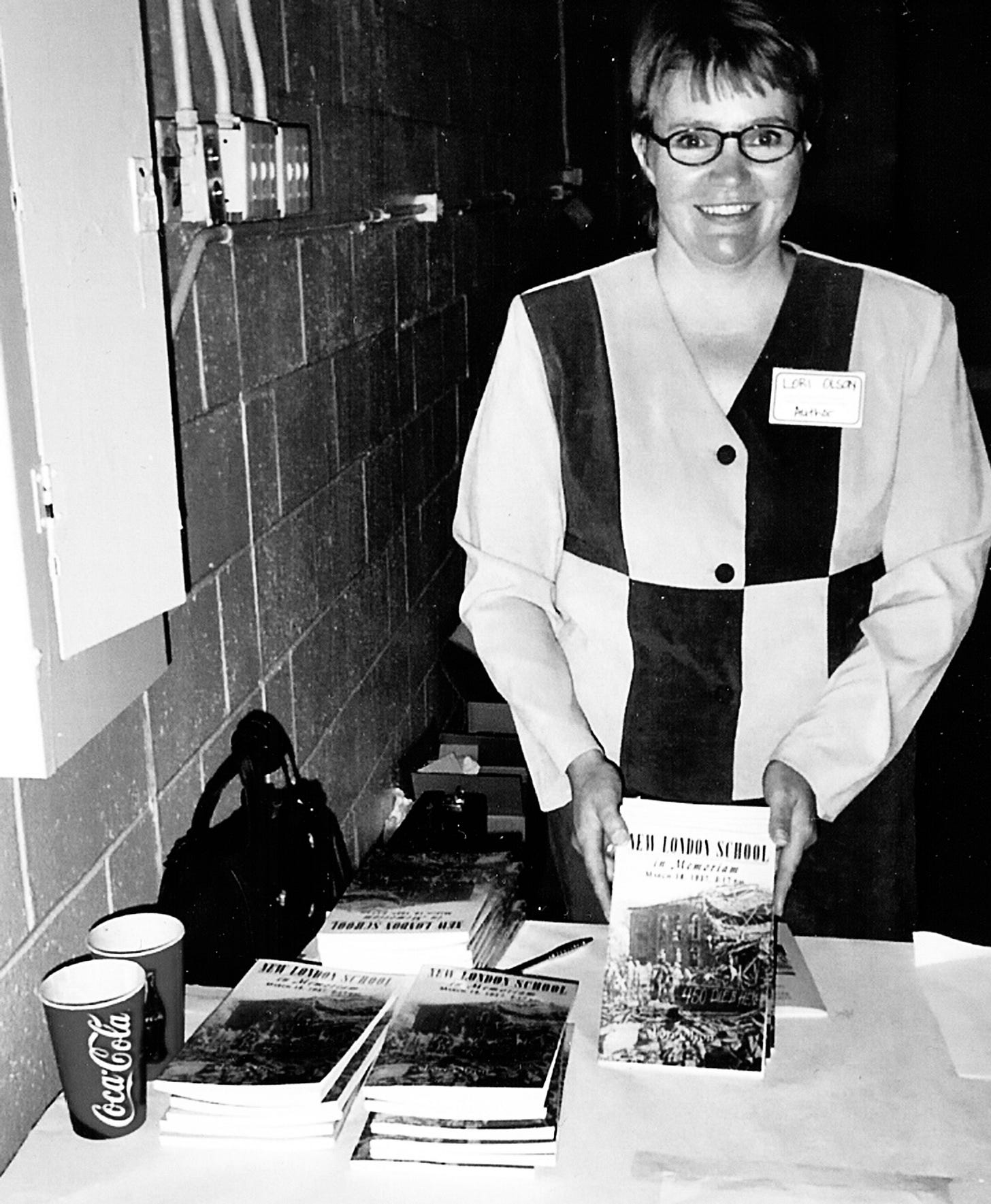

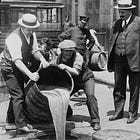
Oh, Lori, what brilliance you bring to such stories. No wonder Texas in March means so much to you. 💔
This brought tears to my eyes and a story that is close to my heart. Incredibly powerful thank you for sharing this with us Lori